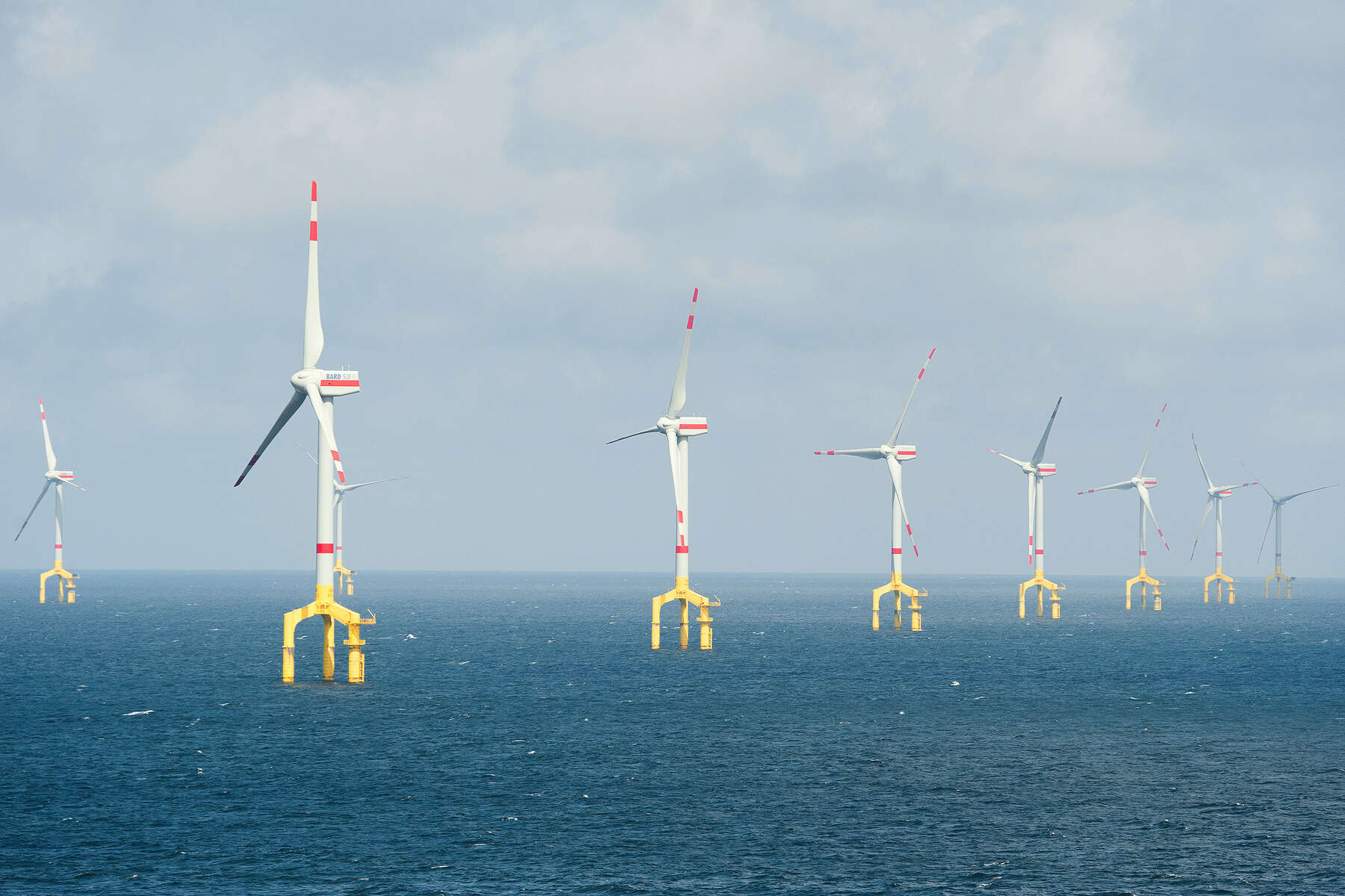
Submersible borehole pumps withstand all weathers
Reliably providing private households and industry with power from the socket involves some tough technical tasks. Generating electricity is only one of them. Where renewable energies are used, transmission network operators like TenneT play a particularly important role.
For example, TenneT makes sure that the power generated in offshore wind farms reaches the consumers on shore over large distances with as little loss as possible. One of TenneT's key partners is KSB with its extremely tough submersible borehole pumps.
The project: Pumps for cooling rectifiers
Converter platforms are among the crucial components required for connecting offshore wind farms to the power grid. One of the platforms comprises the technology for transmitting high-voltage direct current to the mainland. The alternating current generated by offshore wind turbines is converted into direct current to keep transmission losses to a minimum. Due to the waste heat generated in this process the rectifiers have to be cooled continuously. This cooling system is equipped with KSB’s UPA pumps, mastering extreme technical challenges at a long distance from the shore.
The customer: TenneT
TenneT is one of the leading cross-border transmission network operators in Europe, providing services in the Netherlands and Germany. The company's close to 5000 employees ensure that about 42 million end users in the markets connected are reliably provided with power 24/7 from high-voltage and maximum-voltage networks, covering a length of 23,500 kilometres.
The challenge: Technology facing the toughest of conditions
The predominant climate is rough in the middle of the North Sea. Technical plants such as wind farms and converter platforms have to master truly challenging conditions. Salt water causes corrosion, even when high-quality materials are used. Biological matter such as mussels attach to the equipment, clogging suction openings or blocking moveable components. Despite these difficult conditions it is pivotal for all equipment used on unmanned platforms to function 365 days per year without any maintenance.
TenneT’s converter platforms HelWin alpha & HelWin beta | © TenneT
The solution: Use of special materials
For many pumps KSB selects materials specifically for the customer and the application. This is how the most reliable and economical configuration can be offered for every requirement. In this particular case, it was important for the special material to withstand salt water, so KSB selected a high-alloy super duplex stainless steel of outstanding corrosion resistance.
To prevent mussels and other biological matter from attaching to the pump set and connected hydraulic components, hypochlorite produced on board is injected into the fluid handled underneath the pump set via KSB’s chlorination ring. The chlorination mixture is then discharged in a highly diluted form; it is neutralised by contact with salt water, forming an environmentally friendly compound.
Another preventive measure protecting the sensitive ecosystem of the German mud flats from pollution is the use of contaminant-free UPA seawater pumps. The pumps and motors are designed to work without any oil or grease whatsoever. Should a failure occur, the seawater surrounding the equipment is not subjected to any risk of leakage.
From a design point of view this entails another benefit in terms of savings for the operator: The UPA submersible borehole pumps not only offer a high efficiency and keep energy costs down, they are also completely maintenance-free. They do not require any supplies to be refilled or any other type of servicing. KSB simply arranges inspection intervals in line with the customer’s requirements. The general recommendation for offshore applications is a preventive inspection every 5 years and the replacement of wear parts every 10 years.
A converter platform's pillars, in which the UPAs do their work | © TenneT
Redundancies prevent cost-intensive emergency service jobs. On each converter platform one or two pumps are in operation while two pumps are on standby.
To further increase the operating reliability of the submersible borehole pumps fitted sensors continuously monitor the condition of the pumps and motor. The conductance sensor, for example, recognises any ingress of salt water into the motor of which it will alert the operator immediately. A further eleven parameters are monitored around the clock.
Regardless of all the reliability provided by KSB’s UPA submersible borehole pumps, help is also available to the customer should service work be required. KSB offers the operator an optimum aftermarket support, covering spare parts, services as well as experienced offshore personnel’s assistance with continuously optimising the overall system.
Figures I Data I Facts
Plant: Converter platform
End user: TenneT
Project data: UPA submersible borehole pumps
Products used
UPA C 150
All-stainless steel single-stage or multistage centrifugal pump in ring-section design, suitable for vertical or horizontal installation, for well diameters of 150 mm (6 inches) and above.